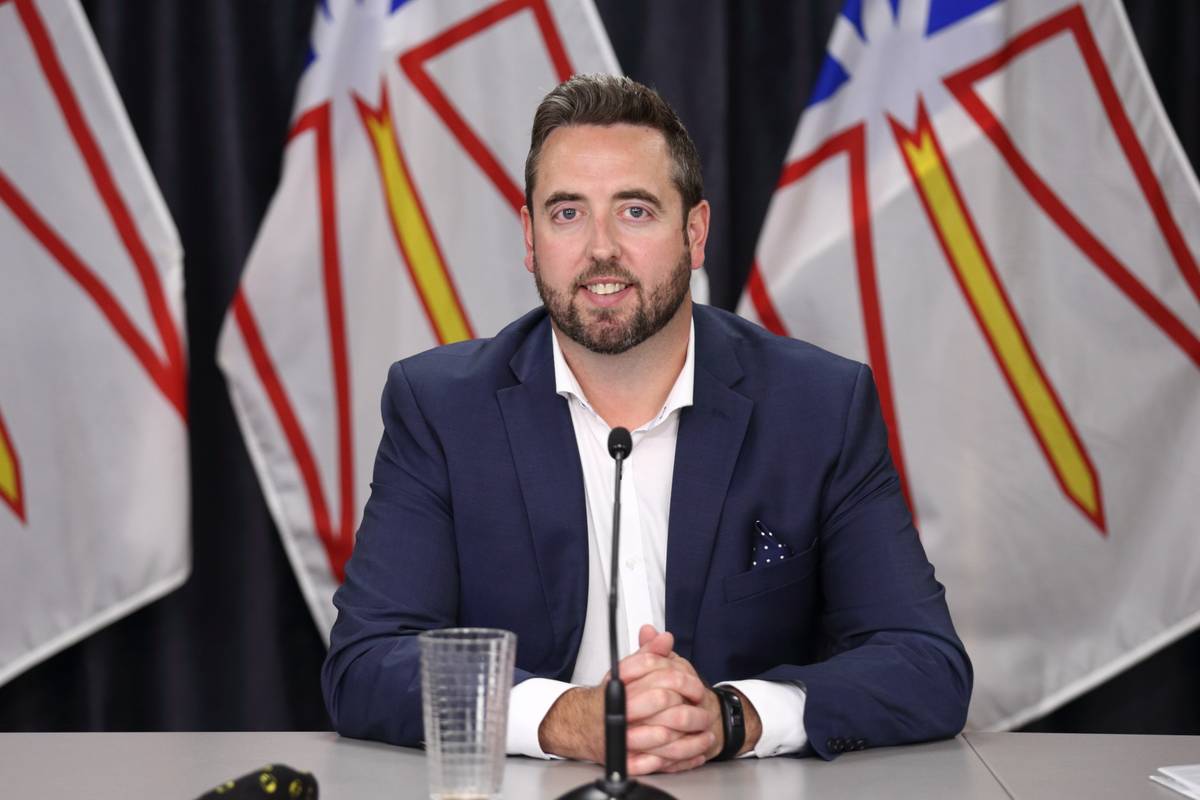Interview
Minister Andrew Parsons, Industry, Energy & Technology
NL Government Forecasts a Long Run for Oil & Gas
Minister Andrew Parsons, Industry, Energy & Technology, Newfoundland & Labrador, Canada, discusses the innovative technology cluster that has grown within and outside of his province, with insights on the technology and the importance of oil and gas.
By Greg Trauthwein
Andrew Parsons is a member of the House of Assembly for a district called Burgeo-La Poile, but he’s also the Minister of Industry, Energy and Technology in the Government of Premier Dr. Andrew Furey.
“When the Premier took over government in August of 2020, he combined the previous departments of natural resources with the economic development responsibilities of other departments, combining it all into one shop, but really also putting a focus on technology, putting that in the departmental name,” said Parsons.
Today his department handles all technology, everything from mining, electricity, oil and gas, offshore, renewables, marine technology, aiming to build a base for economic development opportunities and investment attraction.
With a population just north of half a million, Newfoundland & Labrador is a small province, but its natural resources and cumulative centuries experience living and working by and on the ocean has created a unique and dynamic cluster of excellence in maritime, subsea and offshore energy.
“When you look back historically, the fishery was the backbone,” said Parsons. “But that has grown over time, and now we are building on this blue economy, and the expertise has shifted.”
Specifically, the discovery of oil and gas fields offshore helped to not only bolster the finances of the province, but the cumulative experience of discovering and recovering oil and gas in close proximity to iceberg alley has helped this small population create, refine and export a long list of technologies aimed at working efficiently, effectively and safely in some of the ocean’s harshest conditions.
“We are home to the Hibernia gravity-based structure, which is the world's first offshore oil structure specifically designed to deal with harsh environments, including icebergs,” said Parsons. “We are known as the east coast energy capital, and we cannot overstate the importance of oil to our province. In addition, we export our [offshore oil and gas] expertise all over the world.” As it moves now into aquaculture and marine biotechnology, Parsons observes: “It's amazing, for our province as small as we are, we're certainly batting above our weight when it comes to the ideas that are created here, set up here and then brought elsewhere.”
Banking on Oil & Gas
Historically, while the fisheries have been the backbone of industry in Newfoundland & Labrador, with traditional fisheries and aquaculture continuing to grow.
But make no mistake, offshore energy is the muscle. Again, a commodity which has its peaks and valleys. In 2023 the Province produced about 73 million barrels, or about $8 billion in oil production. With the Terra Nova FPSO going back into production in November 2023, Parsons expects oil production to rise to around 82 million barrels this year.
Another promising development is Cenovus’ nearly billion-dollar investment in constructing the West White Rose Project now, another key plank in ensuring rising production numbers.
“When you're talking about 16% of our GDP and when you're talking about a shade over 10% of our actual government revenue, it's a big, big deal,” said Parsons. “In all, we have four developed oil fields: Hibernia, Terra Nova, White Rose and Hebron. Everybody's producing again this year, [and the output is] going to go back up,” helping Newfoundland & Labrador retain its spot as the number three oil and gas producer in the country behind Alberta and Saskatchewan.
“Overall, our economy this year is expected to grow, the GDP growth is expected to be about 5% this year, which is certainly music to the ears of our finance minister, Siobhan Coady,” said Parsons.
First Class Facilities
The energy business off the shores of Newfoundland & Labrador were, in fact, a driver for much of the modern facilities and local expertise that has developed in the region since the Hibernia platform first started producing in 1997.
Some of the unique assets in the region that attract investors and collaborators from around the world include:
-
The Launch: A state-of-the-art living lab operated by the Marine Institute out in Holyrood, which brings the world's harshest cold ocean environment directly to the client. Specialists in harsh ocean tech R&D, testing and demonstration.
-
The Co. Innovation Centre: The Co. Innovation Centre is helping to address the tech needs of established companies as well as the new ones that are pursuing remote ops in energy, healthcare, mining, fisheries, transportation and more.
-
The National Research Council: “NRC has an amazing facility in St. Johns that is one of the most advanced indoor model ocean facilities in the world,” said Parsons. Among the facilities are the ability to produce multi-directional waves in extreme temperatures, at extreme sea states, able to generate wind to simulate real world marine conditions. NRC has a towing tank able to test most any vessel, including high speed vessels such as warships, to bulk carriers and patrol vessels. NRC also has “an amazing ice tank to simulate what's going on in the Arctic,” able to grow ice quickly and control its properties.
-
Center for Marine Simulation: An arm of the Marine Institute, which is a gem in itself with an amazing group of marine tech training, research and development.

